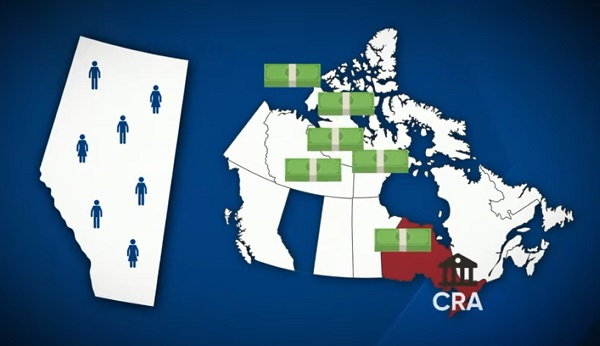Alberta
How an Alberta energy company voluntarily restores caribou habitat in northern Alberta

Helicopters dropping tree planters into forest corridors. This is not an image that typically comes to mind when we speak about energy production in Canada. Truth is, voluntary initiatives like the Caribou Habitat Restoration Project by Cenovus are very much part of everyday life for Alberta energy companies.
Let’s support our families, our neighbours, and our communities by taking a minute to learn about this particular effort. If you’re already well aware of the environmental focus of Alberta energy companies, you can help by sharing information like this with people you know and encouraging them to do the same. Just by taking the time to learn something new and sharing this information you are helping to make a difference at home in Alberta, across the country, and around the world! Thank you for supporting your community, your province, and your country!
Todayville is sharing this video as part of our #visionCanada2119 initiative.

From Cenovus Energy
Caribou Habitat Restoration Project
Our 10-year Caribou Habitat Restoration Project, announced in 2016, is a voluntary environmental initiative that represents the largest single area of boreal caribou habitat restoration undertaken by a company anywhere in the world.
We use proven reforestation techniques to restore old seismic lines, access roads and other linear disturbances. During 2017, we treated approximately 270 kilometres of these linear features in an area comprising about 276 square kilometres. Our restoration program is helping to reduce fragmentation in the Cold Lake caribou herd’s habitat, where our Foster Creek and Christina Lake oil sands projects are located.
Since 2013, we’ve cumulatively treated more than 700 kilometres of these linear disturbances and planted more than 850,000 trees. As part of our 10-year project, we plan to take that total to 3,500 kilometres treated within an area of 3,900 square kilometres – about five times the area of the city of Calgary. We plan to have planted approximately 4 million trees by 2026.
Our project uses techniques such as mounding the ground, planting trees on these mounds, adding woody debris and leaning tree stems into the pathways to help cover historical corridors cut into the forest for seismic work, access roads and other activities. By closing these long open stretches, our work aims to make it harder for wolves to hunt caribou. Woodland caribou are listed as threatened under Canada’s Species at Risk Act.
We continue to measure and monitor the results of our restoration work and share what we learn with others through Canada’s Oil Sands Innovation Alliance. For example, we’re a member of the Regional Industry Caribou Collaboration, where producers work collaboratively across individual company tenures and lease boundaries to coordinate habitat restoration in the Cold Lake and East Side Athabasca River caribou herds and conduct research on caribou ecology and how wildlife respond to habitat treatments. We also work on a coordinated caribou approach with our peers at the Canadian Association of Petroleum Producers.
Alberta
Temporary Alberta grid limit unlikely to dampen data centre investment, analyst says
From the Canadian Energy Centre
By Cody Ciona
‘Alberta has never seen this level and volume of load connection requests’
Billions of investment in new data centres is still expected in Alberta despite the province’s electric system operator placing a temporary limit on new large-load grid connections, said Carson Kearl, lead data centre analyst for Enverus Intelligence Research.
Kearl cited NVIDIA CEO Jensen Huang’s estimate from earlier this year that building a one-gigawatt data centre costs between US$60 billion and US$80 billion.
That implies the Alberta Electric System Operator (AESO)’s 1.2 gigawatt temporary limit would still allow for up to C$130 billion of investment.
“It’s got the potential to be extremely impactful to the Alberta power sector and economy,” Kearl said.
Importantly, data centre operators can potentially get around the temporary limit by ‘bringing their own power’ rather than drawing electricity from the existing grid.
In Alberta’s deregulated electricity market – the only one in Canada – large energy consumers like data centres can build the power supply they need by entering project agreements directly with electricity producers.
According to the AESO, there are 30 proposed data centre projects across the province.
The total requested power load for these projects is more than 16 gigawatts, roughly four gigawatts more than Alberta’s demand record in January 2024 during a severe cold snap.
For comparison, Edmonton’s load is around 1.4 gigawatts, the AESO said.
“Alberta has never seen this level and volume of load connection requests,” CEO Aaron Engen said in a statement.
“Because connecting all large loads seeking access would impair grid reliability, we established a limit that preserves system integrity while enabling timely data centre development in Alberta.”
As data centre projects come to the province, so do jobs and other economic benefits.
“You have all of the construction staff associated; electricians, engineers, plumbers, and HVAC people for all the cooling tech that are continuously working on a multi-year time horizon. In the construction phase there’s a lot of spend, and that is just generally good for the ecosystem,” said Kearl.
Investment in local power infrastructure also has long-term job implications for maintenance and upgrades, he said.
“Alberta is a really exciting place when it comes to building data centers,” said Beacon AI CEO Josh Schertzer on a recent ARC Energy Ideas podcast.
“It has really great access to natural gas, it does have some excess grid capacity that can be used in the short term, it’s got a great workforce, and it’s very business-friendly.”
The unaltered reproduction of this content is free of charge with attribution to the Canadian Energy Centre.
Alberta
Alberta Next: Taxation

A new video from the Alberta Next panel looks at whether Alberta should stop relying on Ottawa to collect our provincial income taxes. Quebec already does it, and Alberta already collects corporate taxes directly. Doing the same for personal income taxes could mean better tax policy, thousands of new jobs, and less federal interference. But it would take time, cost money, and require building new systems from the ground up.
-

 Fraser Institute1 day ago
Fraser Institute1 day agoBefore Trudeau average annual immigration was 617,800. Under Trudeau number skyrocketted to 1.4 million annually
-

 MAiD1 day ago
MAiD1 day agoCanada’s euthanasia regime is already killing the disabled. It’s about to get worse
-

 Frontier Centre for Public Policy1 day ago
Frontier Centre for Public Policy1 day agoNew Book Warns The Decline In Marriage Comes At A High Cost
-

 Business1 day ago
Business1 day agoPrime minister can make good on campaign promise by reforming Canada Health Act
-

 Addictions1 day ago
Addictions1 day ago‘Over and over until they die’: Drug crisis pushes first responders to the brink
-

 International1 day ago
International1 day agoChicago suburb purchases childhood home of Pope Leo XIV
-

 Daily Caller1 day ago
Daily Caller1 day agoUSAID Quietly Sent Thousands Of Viruses To Chinese Military-Linked Biolab
-

 Business2 days ago
Business2 days ago103 Conflicts and Counting Unprecedented Ethics Web of Prime Minister Mark Carney



